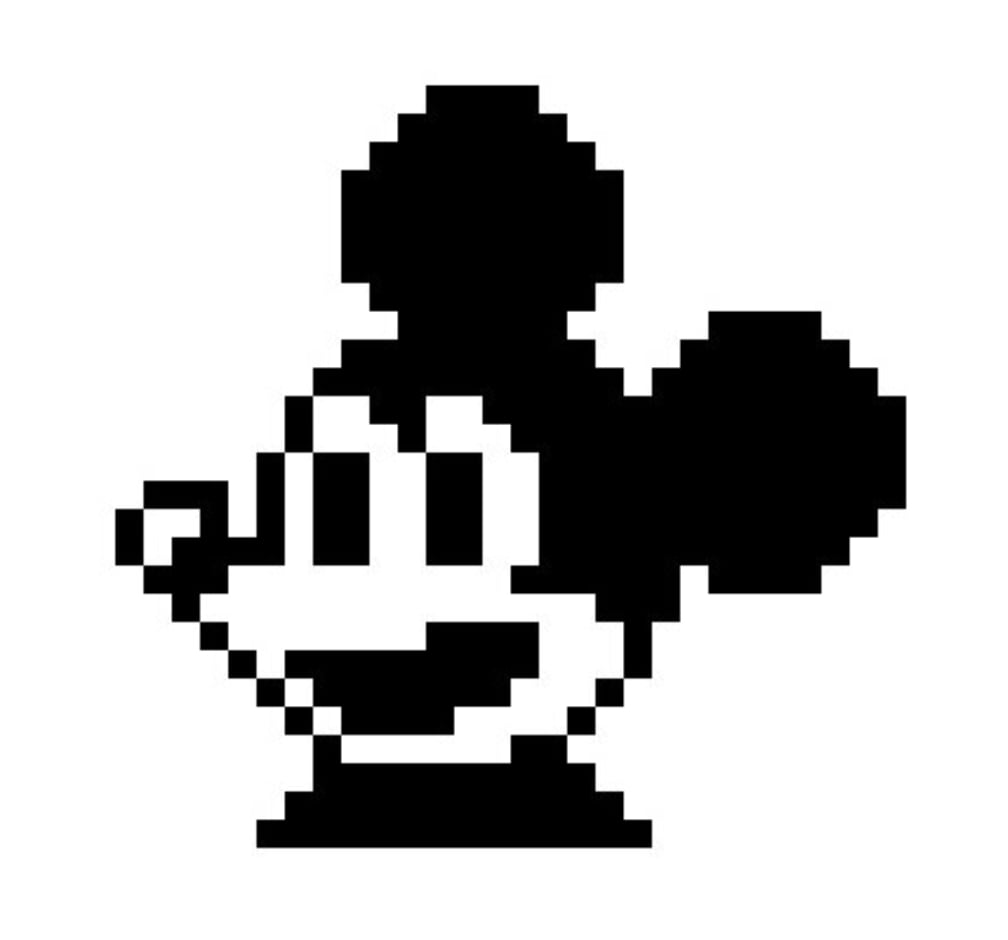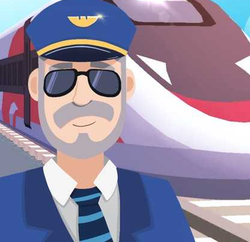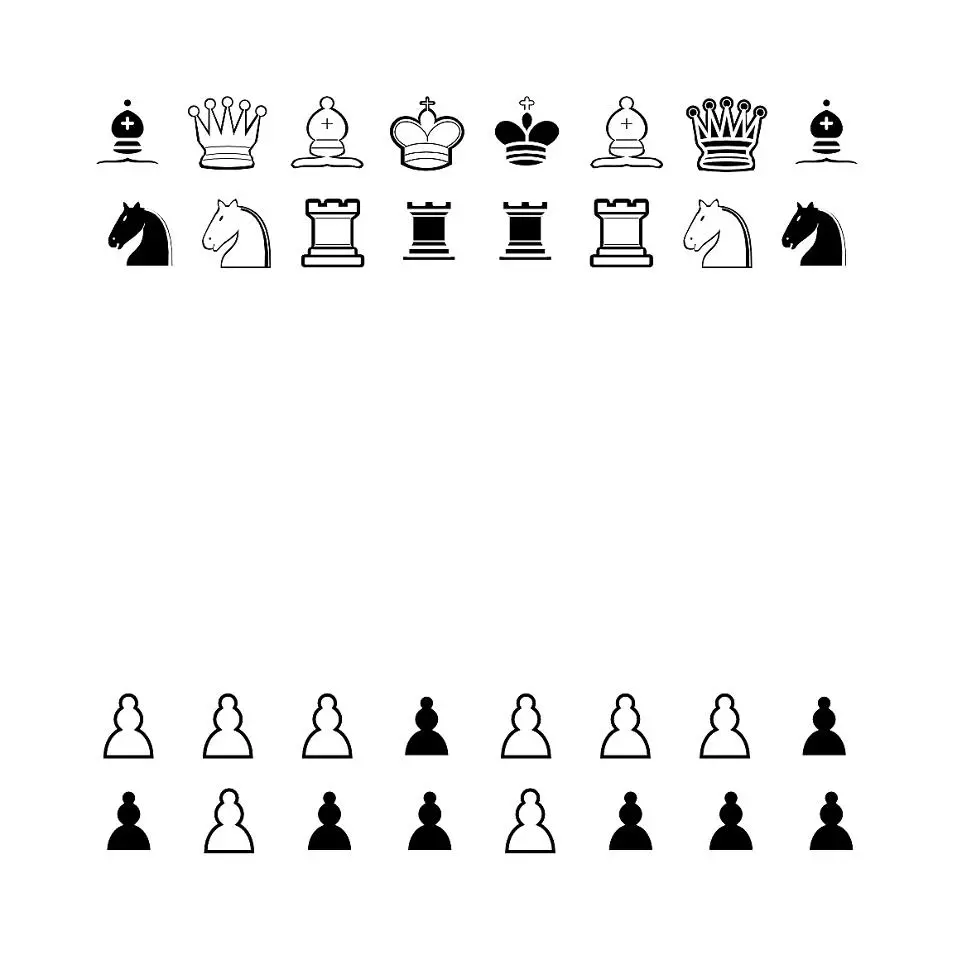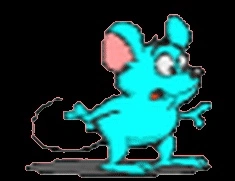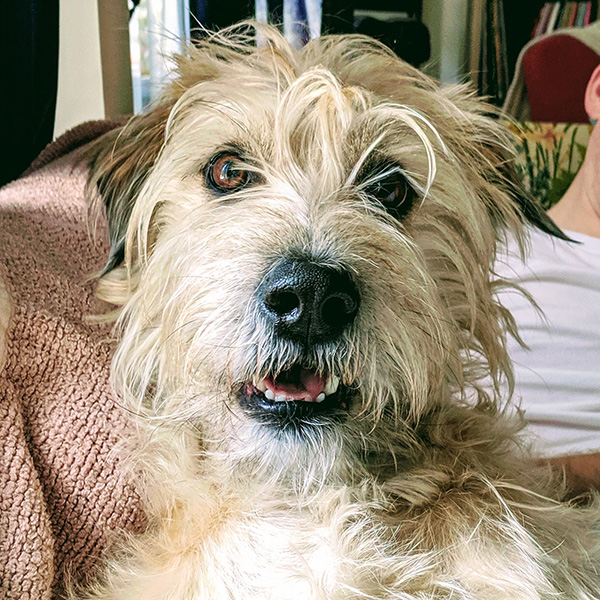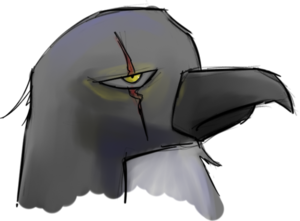- cross-posted to:
- comicstrips@lemmy.world
- technology@lemmy.world
- comics@lemmy.ml
- cross-posted to:
- comicstrips@lemmy.world
- technology@lemmy.world
- comics@lemmy.ml
From their mastodon: https://mastodon.social/@oatmeal/115333929613343166
deleted by creator
I agree that it’s a skill, but I think the point is that it’s a skill with a very low ceiling compared to art.
Like being able to use a coffee machine.
I disagree. While there’s some genai tools that run on autopilot, there’s a whole wide ecosystem around open source tools which have a way higher skill ceiling and allow for way more creativity and control
So you would say the level of skill, study and practice for genai art is approximately the same as a non-ai artist?
Because that was the statement you disagree with.
Honestly I don’t know. Is the skill level of a photographer? I’d say the skill ceiling is just higher than the oatmeal thinks
Those two statements aren’t synonymous at all, but also, yes.
Everything that you do as part of a process to create non-AI art, as soon as there is a digital component (even if the digital component isn’t in the end product), can be done as part of a process involving AI art. The only difference is that non-AI art doesn’t have the flexibility of using the tools available to AI artists.
If anything, the skill floor is lower for AI art, because you can much more easily churn out something that looks technically good at a glance with a single prompt, but the ceiling is higher, because you literally have more skills available to combine when creating your finished product.
(This of course assumes that you consider any art created with GenAI art in the process to be GenAI art, regardless of what else was involved, but most people with a hardline stance that creating GenAI art takes no skill would agree with that statement.)
Setting up an ai to draw the kind of stuff you want is not the same skill as typing in what you want, the former is more akin to setting up a coding environment
Interesting point, but the middle part where they attack AI users is maybe a bit too long.
I definitely agree with the “when I find out its AI art I feel deflated” feeling. For me it is the lack of intentionality that makes current AI models worthless slop and stops it from being a proper tool, like the magic wand described in the post. No AI user can generate the same thing again. Thereby it is not their skill that created it, but random chance. What differentiates an artist is that intentionality. “If I put that paint stroke here, it will look like an eye brow” or “if I press that key for 4 seconds now, it will accentuate the following notes”. When you can create parts of the artwork that intentional, then I agree that AI is a tool for artist. Before that it’s just gambling and trying to present other peoples work (the training data) as your own.
Stephen Spielberg will never be able to coax an actor into giving the exact same performance twice. Do you believe Spielberg is an artist?
Definitely an interesting question that made me think.
First, I would say directors are usually not praised for the acting of the actors, because it is not the directors craft that is shining. They are however praised for selecting good fitting actors and for giving those actors the right lines and scenes in order to shine, because that is their usual involvement. And of course the direction giving during the filming, as their title implies. The whole movie is the combination of a lot of smaller artworks and the skillful combination of those pieces is the art of the director and what they get praised for. Like a collage: the pieces are created by other artist but the skilful arrangement of it is an art form in itself, without praising the collage artist for the individual artworks.
The question in my opinion is rather if film directors in general are artists, because as you said: they don’t do it by themselves but rather rely on other people: actors, cameramen, cutter, editors… . And each single work could also be done by the director themselves instead of relying on other people.
And I would say: yes, film directors can be artist, if they involve themselves in the creative process in a significant way instead of giving every decision to other people and just being a producer with a different title. To refer to my prior comment: the intentionality is the artists touch. Like any boss of a creative team, like in video game production: it depends.
If Spielberg was involved in their movies in that way I cannot say, becausei haven’t looked into it. Probably they did and they are, but I cannot answer your specific question in earnest, because I don’t know.
I agree. I think 99% of AI art is made by a talentless hack of a human art director, and an unfeeling machine printer, neither of which is an artist. I think 1% of AI art is made by a thoughtful and intentional human art director who is skillfully manipulating various unfeeling machine printers, and who is an artist.
And both of them are using models that cost fossil fuels and water resources to train, which is a sin.

Beautiful, maybe. But will it beat

There are some great quotable lines here that I will strive not to quote to my least valuable IT colleagues. But I will think them pretty loudly, sometimes.
Counter argument:
Early on in the days of AI, so, geeze, like all of 2 years ago now, Steve Coulson was experimenting using Midjourney to create comic books.
You can download them for free, the most impressive one at the time was “The Lesson”:
https://aicomicbooks.com/book/the-lesson-book-by-steve-coulson-download-now/
At this point the creator is less of an artist than they are a producer. He worked from a script and used AI to generate each individual panel of the book.
I’m sure for each panel finally used there were hundreds, if not thousands of rejects, either because they failed to meet the request or didn’t match the style, or the character models weren’t quite right, or there were too many hallucinations, etc. etc.
It still took a human to go through and make the artistic choices necessary to map the images to the narrative and produce the book as a whole.
In this way, AI art is kind of like decoupage. All the images used are pre-existing, but it still takes human intent to select and combine them in a new way.
Very similar things were said when photography was invented. There was great outcry that it debased art as a whole. It took decades before visual symbolic language adapted to the new media and methods. Man Ray was just one artist that found some of the new ground in photography. I’m sure you can find others.
The problem (IMO) is impatience. The pace of innovation is so fast that we’ve forgotten how slowly art history usually happens. We see fads, fashion, and styles change quickly and take it as a permanent seismic shift. Art contains symbolic language that needs to grow and evolve in order to become expressive. Were the first movies masterpieces? Well, they were for the time. But they seem primitive and amateurish to a modern eye. Because the art grew.
I agree the current generation of slop is… Slop. But we haven’t had enough time to judge it this harshly. Yet.
Just to continue your thought on photography - there is masses of photo slop filling up our spaces too. Take it from someone who has to sift through stock photos for my work sometimes.
Agreed.
My parents also said the same thing about electronic music
“it’s not real music, the computer makes it!”
every new technology that lowers the barrier of entry gets derided every time. Tale as old as time.
Every new technology that enables more of the masses to participate will obviously mean more low quality stuff gets made. That doesnt mean the tool is worthless.
Is there a lot of AI slop art? Of course there is… but i hate these anti-AI extremists (especially concentrated in the fediverse) that reject ANYTHING that has even touched AI to be worthless.
“oh what a nice picture… wait what? The artist filled in one corner with AI? it’s total trash!”
Counterpoint: previous technologies also enabled people to do what wasn’t possible before. Photography allowed for perfect captures of a place and time. Electronic music can create sounds that no physical instrument can. So far, AI hasn’t made anything “impossible” possible, it only makes what a skilled artist or writer could make but super fast.
but super fast.
that’s already making an “impossible” into a “possible”… and in my books, that’s a useful tool if you take all the value judgements out of it.
If one brush stroke in a painting were made using the blood of a murdered child as paint, would you treat the entire painting and the artist with suspicion? I would. Maybe a masterpiece could be so good that it would overpower that one act in my subjective evaluation, but it would have to be the masterpiece of a true visionary. I would not be easily persuaded.
Oil is the blood of the very earth on which we depend to live, so to spill it in the name of art is perhaps a greater crime than to spill human blood. Again, I could be persuaded by a masterpiece to set aside the flaws in its creation, but it would require a certain bar of quality.
The difference is the generated images weren’t created from work or imagination, it was stolen.
owning “imagination” or ideas, images or even melodies is a new idea for humanity. For most of our history people wouldn’t even think of owning an idea and profiting from its reproduction.
If I paint a study of Van Gogh’s Starry Night, even though I painted it it’s NOT my art. Trying to sell a reproduction without acknowledgment that I’m not the original artist is forgery and fraud.
If I paint a study of Van Gogh’s Starry Night, even though I painted it it’s NOT my art. Trying to sell a reproduction without acknowledgment that I’m not the original artist is forgery and fraud.
you’re still looking at art through the lens (window, frame) of today, my comment was to remind that this proprietary way of seeing art wasn’t always the norm. “Original artist” is itself a product of the market. There were no fraudsters, only artisans making images.
Van Gogh is an interesting example, whose paintings wasn’t worth a cent during his life. Others, later on, profited from his work.
Art world itself is full of absurd examples working on these ideas. (Latest must be the Comedian.
So the images in the book were intentional recreations of existing, discrete pieces of art?
What do you mean by “most of our history” , like in a timeframe sense ?
Copyright as an idea has only really be around since the late 1400s. The intial purpose of copyright was to control which information can be given to the public. It’s now being used by corporations to maintain control over the creative arts.
https://en.wikipedia.org/wiki/History_of_copyright#Early_developments
Sure, but that’s not the only way people have guarded ideas.
Secret societies, artisan guilds that only taught it’s members and on occasion killed people who find out their secrets, professions taught only to the direct student.
Just because the formal idea of something was recorded doesn’t mean it wasnt around before.
As people we are constantly hoarding knowledge and ideas to benefit is individually or as a tribe.
As people we are constantly hoarding knowledge and ideas to benefit is individually or as a tribe.
rather ☞ As people we are constantly sharing knowledge and ideas to benefit collectively
They aren’t mutually exclusive concepts, both can be true.
The point was that guarding ideas didn’t start with formalised copyright.
“history” has a clear definition and implies writing… i would have written but apparently my understanding is considered “old conception” now ☞
The use of symbols, marks, and images appears very early among humans, but the earliest known writing systems appeared c. 5,200 years ago. It took thousands of years for writing systems to be widely adopted, with writing having spread to almost all cultures by the 19th century. The end of prehistory therefore came at different times in different places, and the term is less often used in discussing societies where prehistory ended relatively recently. It is based on an old conception of history that without written records there could be no history.
Socrates railed against writing. He is credited with saying that it was a crutch that would reduce the human capacity to remember things.
if you’re writing about Socrates now, that’s because Plato wrote about him.
See “decoupage”.
I saw this earlier today, since I get his newsletter. I think I mostly like the point that art is a little more than just the product. People do care how things are done, otherwise we wouldn’t enjoy process videos or art live streams.
He loses me a little on the “it takes work” part, since I’m more keen on people understanding that art is also expression and even if you have no idea what you’re doing, I respect people putting soul into things they make (even if it’s… Uh… Sonic mpreg or something… Ugh).
But, if you read his comic on creativity, he even admits he started off hating drawing because it was uncomfortable compared to his previous work in Web design, and made stuff using that odd method to express himself. I think he ultimately wants people to get a tablet and try it themselves, as he admits in that other comic that he grew to love drawing once he made the switch in 2012 and it was a mistake to stick to other tools he thought he had to use.
Yes exactly, art is simply a desire to express yourself and choosing to do so. A generative model isn’t sapient and cannot express itself, and a person asking something else to create for them in whole cloth isn’t partaking in self expression either. It’d be no different than calling yourself an artist because you commissioned someone to draw for you. In that case though, someone exists who could express something (the human who’s drawing).
Art is not skill, techniques, or popular reception. It’s the little rhythm you tap on your leg, the silly stickman with a gun you drew as a joke for a friend, the little dance you do when you’re home alone. I worry this generative stuff will further push people from partaking in something so human because it simply “isn’t good enough” and “I can ask something else to make a masterpiece in seconds anyway.” The pretty little picture isn’t what I’m here for, I’m here to share in your self expression—to see you be you! Anything less than that would feel grossly shallow to me.
His conclusion was spot on.
My pencil, paper, flatbed scanner, toil and troubles was my payoff for my early 2000 webcomic. No monetary compensation could amount for it. It’s 40 years of experience in its making – even though that comic only lasted “about” 2 years. It exalted fans of Wonerfalls, it was chock full of my errors, and it reached its fruition when the very producers of the Wonderfalls tv show seen it. What more could I have asked.
From the first one…

…To the 99th last one…

I don’t if you don’t have the time to develop the skills to make art yourself it’s fun to use. It’s practical if you want something custom like character art for a tabletop rpg. I’m not gonna commission an artist that… But I’m not flooding socials with IA slop nor stealing jobs, there is an in between.
I think he kinda makes that point with his personal thinking on backgrounds. He doesn’t do them. Maybe AI can help there, maybe not, but there are also amazing background artists just as there are very good character artists you could, but likely wouldn’t afford, for your tabletop RPG. And those will be… acceptable as a visualisation, even if not quite a piece of inspired art.
TIL that The Oatmeal is the creator of Exlploding Kittens. Not sure why that didn’t occur to me, seems kinda obvious, in retrospect, he’s got a pretty distinctive art style. I should go back and finish that show.
TIL that Exploding Kittens was more than a card game.
I mostly agree with his take. But I was a bit disappointed when he began to cover using tools to aid art and didn’t talk about using AI as a tool to aid art as opposed to simply generating it completely. There are some insane AI tools you can use now that save loads of time and don’t take away from your artistic expression.
But he did, though.
I thought that was the whole point of him bringing it up.
He said, we have tools (like magic lasso) that let you skip the boring part of art, so you can get to the creative part. AI can be like that; a tool that let’s you skip having to do backgrounds so you can focus on flying rat monstrosities.
He doesn’t use it that way, but he acknowledges that you can.
It’s just that most AI “art” usage is skipping putting in creative effort at all.
He did, he talked about generating backgrounds for works so you can focus on illustrating the subject. A brief touch om the subject, but he acknowledged AI is a tool that can be used as a part of a process rather than replacing the process entirely, and that those two things are different.
Art, poetry, humor, and music aren’t about functional modes of communication. They use the medium to convey a complexity of thoughts and emotions.
AI creations lack that complexity. It’s someone trying to capture a thought and removing themselves from the emotional component.
That’s why they hit flat.
And when I watch AI videos, I get the sense that the people making these things are unable to come up with anything genuinely clever beyond the feat itself
I also feel this way when watching a certain kind of show, where the process seems to have been to write a premise that checks off various boxes, and then the outline was handed to someone else to fill in the blanks, as if all the details are an afterthought, and are fundamentally disconnected from each other. Makes watching it feel like an empty waste of time. Sometimes it seems like it could be good at first, but once you see enough of it to tell, there’s that retroactive disappointment.
Someone once told me that art is like emotional nutrition. That made sense to me. Art feeds my feelings. And if that’s the case, consuming AI art is like eating styrofoam.
This comic essay goes on to say that the reason for this is that it’s not authentic, and what the author went through to produce art is what gives it nutritional value. I don’t think that’s quite right, because this is broader than just art and what an artist is trying to say, it’s a property of all information we consume; we need it, and we want it to be good, not bland and empty and the same as everything else, not irrelevant to our lives. People intentionally communicating their genuine experiences to you through long practice and consideration is something that often meets the bar, but so is a sunset or an animal doing something cute or an unidentified noise outside.
I think what’s being described here, something I personally dislike about a lot of AI content online, is something like an equivalent of symbol drawing. You can tell what the person who put it together had in mind, and also that probably not much thought was put into how to depict it beyond generic standards of quality. So there’s all this space where information could be conveyed, but it’s obvious that it’s effectively just noise and only there to look impressive, and because of the disconnect you’re basically mentally obligated to only consider the barebones concept. This is made worse and more glaring when it looks exactly like all the other similar AI images and videos.
Which is a shame because it doesn’t have to be like that. More effort, creativity, and playing off what the tool is producing makes it not bad to look at imo. So does going the other direction and letting AI output be its own thing rather than a representation of your thought. I still have an image I generated years ago with Disco Diffusion framed on my wall, it’s really abstract and barely looks like the prompt but it still is really cool to me because a human being would not have made something that looks like that.
He is so close. He just needs to make the same connection he’s made to every application of LLMs. All of it is low-quality, useless drivel that is actively making the world a worse place.
Who even cares about the quality. That makes it seem like a solvable problem. AI use is fundamentally alienating. No amount of quality redeems this fact, when you see an AI generated person your brain is registering a non-human as a human. When you draft an AI generated email or report you’re allowing a machine to communicate with other humans using its voice. Reading content changes your brain, this used to mean changing your brain TOWARDS another human, AI generated content means your brain is changing towards a machine’s language.
This might not seem so bad if it were not that these machines are owned and controlled by a person. Everytime you use or consume AI you alienate yourself from other humans and bind yourself to a rich person’s machine.
Marx envisioned private ownership of the means of production as alienating a worker from his labour. Never did he imagine private ownership of the means of production alienating a human from his humanity whether he works or not.
This take gets so close to a nuanced view then doesnt quite make it there.
TL;DR Generative AI is just a tool Authorship is still fundamental to Artistry. Artists will use AI to author great works, but most users will not. There is no shortcut to previsualization and taste.
The core point is that AI Image Generation is a tool, a tool that is getting more tool-like every day. To use his analogy about Magic Lasso, it was a tool that made a step in the process of image editing faster and easier when it worked, but many people using Photoshop might never even touch it because they don’t need or haven’t learned its use case.
Most people today using AI image generation do not know what ControlNet is, or how to successfully create a repeatable reference for a character to be generated.
While the generalist application of the core technology “text to image” is easy to fool around with for the layperson to generate images they haven’t pre-visualized it is an entirely different process to pre-visualize and then pursue the specific execution of an image. This is artistry, not putting a brush to paper but creating an idea and then executing it to the predetermined specification.
As a necessary aside, yes there is artwork which is “spontaneous” “generative” or “Process-Driven” but in those cases the artwork is framed around the process and/or the concept. The story of its creation is fundamental to its value. “So I wrote a prompt and generated the image” isn’t going to command much clout in the Fine Art world.
To go back to the definition of an artist as one who conceives of and then executes artwork, and how this relates to the use of specialized AI tools, we need to discuss curation and producing.
A curator is one who does not make art, but instead relates works of art to one another and exhibits them in context to perceivers of that art, they do not fundamentally create the value of the art, but can add to the value of the work through discussion, illumination, and exhibition. Much if the relation of individuals to artwork on the internet is mediated through the exchange of curation, that is to say we curate what we like when we repost the works of others and comment on them, and consume art online most often in this context of being curated by our extended social network.
Contrast this with the role of the Producer in cinema, the producer’s role is to curate talent to achieve a cohesive and successful work of art. They are almost never the Artist themselves, except in specific cases of Auteurs which I will touch on later, rather it is their job to match up Artists with each other to assemble a tram capable of executing an effective synthesis in the final work. The director works the Actors into. the shape of the performance they have conceived, the Production Designer creates the physical or digital space in which the performances take place, etc.
Is your general member of the public typing prompts into an image generator more of an Artist, a Curator, or a Producer? To me there is no one answer, instead the person is taking more of the approach of one of these by way of their process.
Now we come to Auteurship, in cinema when there is one artist who has fully conceived of the final work of a film in every detail, and takes on the role of final decision maker in every aspect of the artwork, taking authorship from the others working on the film and placing it solely on. themselves, we call them an Auteur. The Auture is usually the Director, but very occasionally might be the Producer, or even the Writer, but in all cases they are the ones who have created ahead of time in their mind’s eye the specific aesthetic, pacing, story, performance, and even score of the film and are striving to bring the reality of what is being created as close as possible to that vision, everyone else on the production is then placed in the role of technician, or perhaps craftsperson. The Auteur is the Artist, and the film is their work.
The last thing to say about the Auteur is this: there are many good Director, Producers, and Writers, but very few good Auteurs.
This is the case for AI, as the tools are developed to create specific, predictable outcomes using generative tools, the burden of technical execution deminishes, but the burden of Authorship, of Artistry, can not be deminished.
Generative AI is just a tool, but it is vision and storytelling that will enable its output to be Art and recognized as such by Curators and the public, and as with every other art, the process will be fundamental to its value, and that process will not be a single offhand written prompt into one generalized algorithm.
Picture this: it’s early 1900’ and you’re a opera singer or an actor for a Shakespeare’s play and you’re asked to give your opinion on Cinema… and someone theorize even TV to you.
I know what you’re going to say: these talentless people is coming to steal your job.
Cinema is not a recognized art form: is a gimmick, a trick made with a huge number of photos.
Those who want to call themselves “actors” are just talentless people who need “one right shot” and being patched in a sequence of “right shots” to complete a wanna-be play. But that not how you make are: every night, every play, you need to walk on stage, in front of the public and deliver “true” art.
Advice? If you were an actor for live theater in the beginning of the 1900… just shut up for a a pair of decades to make sure is not actually art: or you’re going to record in the history how much of a… uhm… short sighted person you were.
Humans make arts, humans decide what’s art… Usually this happen in the switch of the next generation of humans: everything can be a tool for art, future generations of humans decide if they want to call it art or not.
This analogy doesn’t work; acting for cinema still involves acting. Typing a prompt doesn’t involve drawing.

